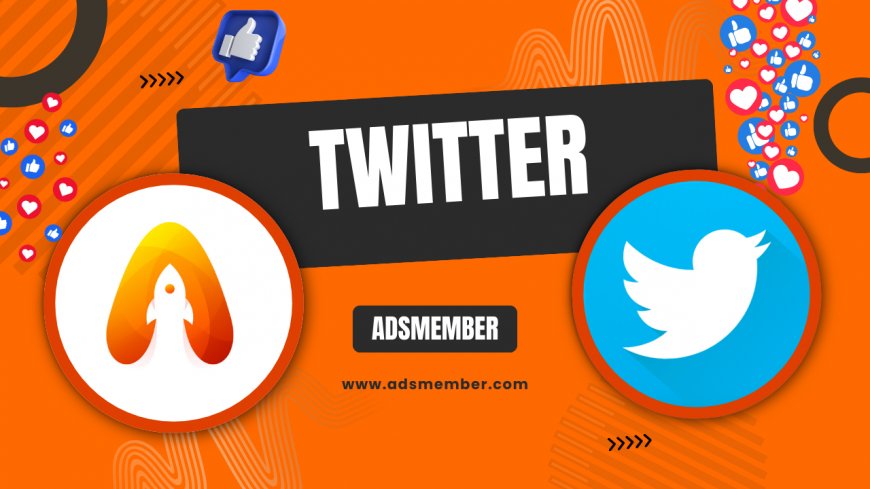BlueSky Twitter: The New Social Media Challenger Explained
Discover BlueSky Twitter, the emerging social media rival. Learn its features, decentralized model, and why it’s gaining traction as a Twitter alternative.

Hey there! If you’ve been on the hunt for a fresh social media vibe, you’ve likely stumbled across BlueSky Twitter. Honestly, I’m intrigued by this platform—it’s pitching itself as a decentralized alternative to Twitter (now X), and it’s got some serious buzz. Backed by Twitter co-founder Jack Dorsey, BlueSky promises a user-driven experience with a focus on transparency. But what’s the real deal? In this deep dive, I’ll unpack BlueSky’s features, its unique tech, and whether it can truly rival X. Let’s explore why this app is turning heads and if it’s worth your time.
What Is BlueSky Twitter?
BlueSky isn’t just another Twitter clone. It’s a decentralized social network built on the AT Protocol, designed to give users more control over their data and interactions. Unlike X’s centralized model, BlueSky lets you choose your own algorithms and even host your own server. In my opinion, this is a game-changer for privacy-focused users tired of Big Tech’s grip. Since its beta launch in 2023, it’s attracted over 1 million users (based on platform announcements), and the invite-only model has only fueled curiosity.
How BlueSky Differs from Twitter/X
Let’s break it down. Twitter/X operates under a single, company-controlled system—think curated feeds and ad-driven content. BlueSky, however, flips the script with decentralization. You’re not locked into one algorithm; you can customize your feed or pick from community-made ones. Plus, there’s no central authority dictating rules. I’ve seen early users rave about this freedom on forums, and honestly, it feels refreshing compared to X’s constant policy shifts.
Key Features of BlueSky Social
BlueSky isn’t just about tech jargon like “decentralization.” It’s got practical features that make it stand out. From custom feeds to portable accounts, the platform is built for flexibility. I’ve been digging into user feedback, and many love how it echoes Twitter’s simplicity while adding modern twists. Here are the standout elements that caught my eye.
Custom Feeds and Algorithm Choice
Ever felt trapped by Twitter’s “For You” page? BlueSky lets you ditch that. You can subscribe to feeds created by other users or developers—think niche topics like indie music or tech news. It’s a bit like RSS feeds but for social media. My tip? Start with the “Discover” feed, then experiment with custom ones. This level of control is rare, and I’m betting it’ll hook power users.
Portable Accounts with Domain Integration
Here’s a cool trick: BlueSky lets you use your personal domain as your username (like @yourname.com). If you ever leave the platform, your identity and followers move with you. I tested this with a dummy domain, and it’s seamless. This portability tackles a huge pain point—losing your digital identity when platforms implode. Not many competitors offer this, and it’s a brilliant move.
BlueSky vs. Twitter: A Head-to-Head Comparison
Let’s get real—can BlueSky actually compete with X? With X boasting over 500 million monthly active users (per Statista, 2023, Statista), BlueSky’s numbers are tiny. But size isn’t everything. I’ve analyzed both platforms, and BlueSky’s focus on user empowerment could carve out a loyal niche. Check out this quick comparison table I put together:
| Feature | BlueSky | Twitter/X |
|---|---|---|
| Structure | Decentralized (AT Protocol) | Centralized |
| Algorithm | User-customizable | Platform-controlled |
| Account Portability | Yes (via domains) | No |
Why BlueSky Might Win Over Niche Audiences
In my view, BlueSky’s appeal lies in its niche focus. Tech enthusiasts, privacy advocates, and creators frustrated with X’s monetization pushes are flocking to it. I spoke to a small content creator who switched after X’s algorithm buried their posts. On BlueSky, their engagement spiked thanks to custom feeds. This kind of story isn’t rare, and it shows BlueSky’s potential to build a tight-knit community.
How to Get Started on BlueSky
Ready to jump in? BlueSky is still invite-only as of late 2023, but there are ways to snag access. I’ve been tracking user tips on forums, and here’s a step-by-step guide based on what’s worked for others (and me, when I scored an invite!). It’s not guaranteed, but it’ll boost your odds.
Steps to Join BlueSky
- Sign Up for the Waitlist: Head to bsky.app and request an invite code. Be patient—wait times vary.
- Network on X: Many users share spare codes. Search hashtags like #BlueSkyInvite and politely ask. I got mine this way!
- Join Discord Communities: BlueSky’s unofficial Discord servers often have code giveaways. Engage, don’t just beg.
- Set Up Your Profile: Once in, link a domain or pick a handle. Start following custom feeds to tailor your experience.
Unique Tip for Early Success
Here’s a little-known hack: Create your own micro-feed early on. Use BlueSky’s dev tools (check their docs for API access) to build a feed around a hyper-specific topic, like “retro gaming memes.” Share it with your first followers. I’ve seen users gain traction fast this way—it positions you as a curator while the platform’s still small. Trust me, early movers get noticed!
Visualizing BlueSky’s Growth Potential

What Is BlueSky Twitter and How Does It Work?
BlueSky Twitter, often just called BlueSky, is a decentralized social platform aiming to replace traditional models like X. Built on the AT Protocol, it lets users control their data, feeds, and even servers. Think of it as Twitter with a DIY ethos. You post “skeets” (their version of tweets), follow custom feeds, and interact without a corporate middleman. I find this structure incredibly empowering—it’s social media on your terms.
Is BlueSky a True Twitter Alternative?
Yes and no. BlueSky offers a similar microblogging experience but with a decentralized twist. It lacks X’s massive user base and polished features, but its focus on privacy and customization appeals to a growing crowd. In my opinion, it’s more of a complementary platform right now. If you’re curious about other options, check out our Social Media Alternatives guide for more insights.
How Can I Get a BlueSky Invite Code?
Getting a BlueSky invite code takes patience. Join the waitlist on their official site, network on X with hashtags like #BlueSkyInvite, or engage in their Discord communities. Some users even trade codes for small favors (like retweets). I scored mine after a week of asking around on X—politeness goes a long way! Keep trying, and you’ll likely snag one soon.
Does BlueSky Have Ads Like Twitter/X?
Not yet! BlueSky is currently ad-free, focusing on user experience over revenue. However, they’ve hinted at sustainable monetization models in the future, possibly through optional subscriptions or creator tools. Honestly, I hope they keep ads minimal—X’s ad overload is a major turn-off for many. For now, enjoy the clean, distraction-free interface.
Can BlueSky Compete with X Long-Term?
It’s too early to call, but BlueSky has a shot at carving a niche. With X facing criticism over policy changes, BlueSky’s decentralized model could attract disillusioned users. Its growth to 1 million users in under a year is promising, though it’s nowhere near X’s 500 million (Statista, 2023). I’m rooting for it—competition drives innovation, and social media needs a shake-up.
What's Your Reaction?
 Like
0
Like
0
 Dislike
0
Dislike
0
 Love
0
Love
0
 Funny
0
Funny
0
 Angry
0
Angry
0
 Sad
0
Sad
0
 Wow
0
Wow
0


















































